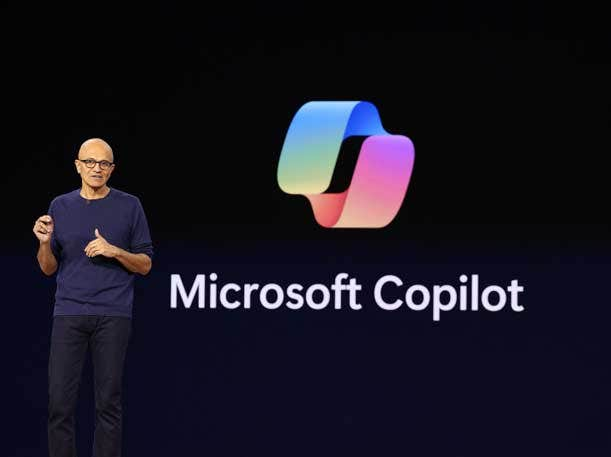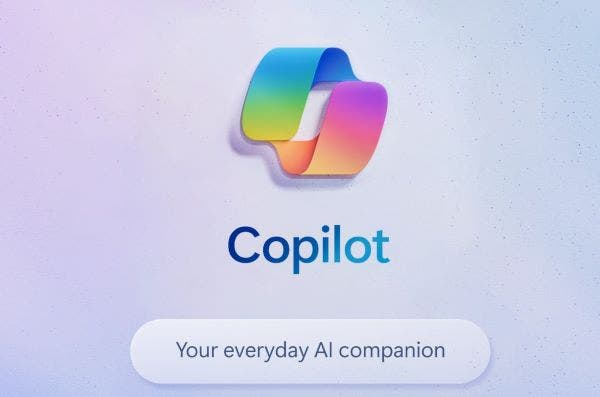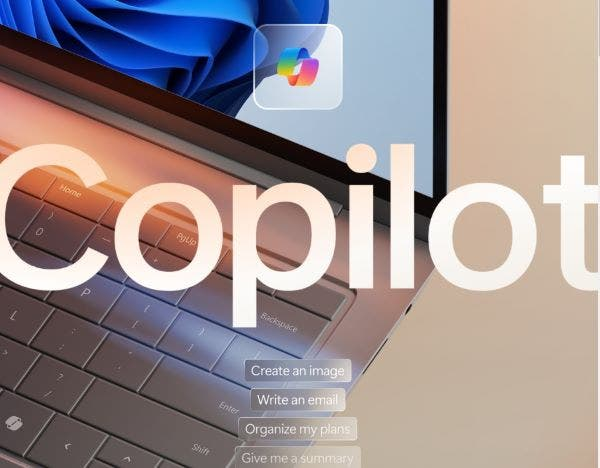Microsoft’s Earnings Results Say A Lot About Cloud And AI Growth, Google And AWS Competition
‘Azure could become the biggest and more important hyperscaler provider,’ according to one analyst report Friday.

Microsoft’s latest quarterly results beat a variety of expectations from Wall Street, but of importance to its services partners is the tech giant’s expectation that not only can artificial intelligence grow, but its cloud offerings have not yet plateaued—with AI a potential growth accelerator to cloud.
At least one investment firm after the Redmond, Wash.-based tech giant’s third fiscal quarter earnings call Thursday issued a report noting Microsoft’s “powerful feedback cycle” as a differentiator among its competitors.
Microsoft benefits from “learnings and driving innovation on the Apps side (with their numerous Copilots) and then applying those learnings on the Azure AI side of the business,” investment firm Bernstein said in a report Friday.
[RELATED: Microsoft Earnings: CEO Nadella Says Systems Integrators’ AI Work Is Sign Of A ‘Maturing’ Market]
Microsoft Cloud, AI Growth
“At the same time they are learning from what clients are doing and the technology they require to help their innovation and ability to execute on the GenAI apps side,” the firm said in its report.
Bernstein compared Microsoft’s cloud offerings—Microsoft is widely considered No. 2 in that market—with rivals No. 1 cloud vendor Amazon Web Services and No. 3 Google Cloud.
Google’s Cloud grew less than Azure during the quarter in a sign that AI investments have made Microsoft Azure “better positioned to capture AI workloads than its competitors,” according to Bernstein.
“We (and the market) await AWS results,” the report said, but Bernstein predicted “that Azure margins will be the same or better than Amazon AWS.”
“Azure contains a large infrastructure SaaS business (Power BI and EMS) as well as a higher mix of PaaS than AWS,” according to Bernstein. “These should, all things being equal, lead Azure to have a higher gross margin at scale.”
Microsoft’s investment in AI has ripple effects for its Azure business, Bernstein said in its report. “Azure could become the biggest and more important hyperscaler provider,” according to the firm. “If this trend continues, then AI will be a large driver of Azure’s long term revenue and will require re-evaluation up of Azure’s potential size.”
AI’s ripple effect for other Microsoft businesses has been reflected in some Microsoft solution providers’ comments to CRN about the early opportunities for them in AI. Microsoft AI and Copilots might not yet meaningfully drive revenue, but partners are engaging with customers on data preparation, data security and cloud migration as customers consider jumping onto the AI train.
Although it didn’t mention Microsoft competitors by name, investment firm William Blair said in a report Friday that ultimately, Microsoft should be a winner in businesses consolidating spending to fewer vendors “across security, cloud services, productivity, endpoint management, DevOps, and collaboration.”
A Bank of America report Friday called Azure “the only software business that is benefitting from AI at this point in the cycle,” validating the firm’s “view that Microsoft remains ahead of the curve in this massive new cycle.”
Microsoft’s total revenue of $61.9 billion, up 17 percent year over year, beat expectations. Its estimated $64 billion or so expected in the fourth fiscal quarter is lower than Wall Street’s expected $64.7 billion, according to Bank of America.
Microsoft’s ramping capital expenditures (CapEx) to meet the AI moment may give some pause over whether AI and Copilots will ultimately pay off for the tech giant.
A Friday report by Melius Research says that Microsoft’s capital investment signals an “AI Gold Rush" seen “with staggering Capex figures and spending outlooks from the first big 3 clouds that have reported this week,” noting “similar bumps were seen at Google and Meta—and soon we bet from Amazon.”
“The big clouds are in a race to host AI workloads and more importantly—infuse AI into everything they do in order to make more money,” according to the Melius report. “If one pulls ahead, the other could lose. Nvidia is the obvious beneficiary, but clearly Broadcom, Arista and AMD should really benefit. Heck, even Intel just said their AI revenue would be higher than we thought in 2H24.”
“Microsoft seems to have an edge right now, growing the fastest on a huge revenue base working through various constraints pretty darn well,” according to the firm. “The F3Q print was solid in so many ways, you can't help thinking about what happens when Copilot actually starts to contribute in 2025.”
Here’s more of what can be learned from Microsoft’s latest quarterly earnings in the cloud and AI market.

AI Growth By The Numbers
In characteristic fashion, Microsoft CEO Satya Nadella shared a variety of data points that illustrate continued adoption of various Microsoft AI products:
- More than 65 percent of the Fortune 500 now use Azure OpenAI Service.
- Microsoft’s Pi-3 Mini small language model (SLM) has hundreds of paid customers.
- Microsoft Fabric now has more than 11,000 paid customers.
- GitHub Copilot now has 1.8 million paid subscribers, with growth accelerating to more than 35 percent quarter over quarter.
- 30,000 organizations have used Copilot Studio to customize Copilot for Microsoft 365 or build their own, up 175 percent quarter over quarter.
- More than 330,000 organizations—including more than half of the Fortune 100—have used AI-powered capabilities in Power Platform.
- Nearly 60 percent of the Fortune 500 now use Copilot.
- There was a nearly 50 percent increase in the number of Copilot-assisted interactions per user in Teams.
- LinkedIn AI-assisted messages are seeing a 40 percent higher acceptance rate and are accepted over 10 percent faster by jobseekers.
- The Dax Copilot by Microsoft subsidiary Nuance is used by more than 200 health-care organizations.
In its report Friday, Bernstein added reasons why some of the data explains the long-term AI opportunity.
The investment firm noted that “the more the customers use Microsoft tools, databases etc .the more likely the customer will stay with Microsoft AI.”
“In addition, this shows the attach of non-AI workloads to AI workloads which is good for the overall Azure business,” according to the firm.
The growth in customers adopting Copilot Studio suggests that some businesses are comfortable making long-term bets on the emerging technology, according to Bernstein. “These customers, we believe, will be more successful (since the system is personalized and tuned on their data) and thus more likely to implement Copilot for M365 through more of their organization.”
Wedbush on Thursday published a report saying the firm continues “to believe that over 70% of its MSFT installed base will ultimately be on this AI-driven functionality for the enterprise and commercial landscapes with FY24 representing the early innings of the AI growth story with pricing, beta customers, and new use cases.”
Melius Research noted in its Friday report that AI’s 7 points to Azure growth occurred amid capacity constraints, meaning it “could have been even better.”
KeyBanc on Thursday put that 7 percent contribution at a $4 billion annual run rate, up from 6 percent the prior quarter. The firm called that AI contribution to Azure “a little lackluster and implies a big sequential growth slowdown on percentage and dollar bases, but this is explained by AI capacity constraints.”

AI Is Pretty Expensive
With Microsoft on track to grow capital expenditures more than 50 percent year over year to more than $50 billion—Melius Research’s report on Friday put its expectation for fiscal year 2025 upwards of $60 billion—Nadella told analysts on Thursday’s call that Microsoft is spending money on training AI models because “we want to be a leader in this big generational shift and paradigm shift in technology.
The CEO said that Microsoft has spent years managing investment in AI and assured continued responsible AI investment while watching demand signals. “We track real closely what’s happening with inference demand,” Nadella said. “And that’s something that we'll manage … very, very closely.”
Microsoft CapEx in the quarter reached $14 billion, namely to “support our cloud demand, inclusive of the need to scale our AI infrastructure,” Microsoft CFO Amy Hood (pictured) said on the call.
The Melius Research report Friday called this figure “a few billion above expectations.”
Looking ahead, Hood said that “even with our cloud and AI investments,” she expects full fiscal year 2024 operating margins to grow “over two points year over year”—adding credence to Nadella’s responsible spending pledge.
Even with CapEx growing in the next fiscal year, Hood said she expects fiscal year 2025 operating margins to only go down “about 1 point year over a year.”
In a Thursday report, investment firm KeyBanc said that Microsoft’s 1 percent margin compression next year “is slightly more than the Street expected.”
But the AI opportunity can’t be understated, Hood suggested to analysts on Thursday’s call. “It's important to think about every business process that can be impacted [by AI], and the opportunity that's represented by every business process,” Hood said. “And so when you think of it that way, I think your opportunity is significant. The opportunity to power that next wave of ‘cloud infrastructure’ is important.”
Hood compared Microsoft’s AI spending to how it approached spending on cloud over the past decade. “Watch the signal, invest to be a leader in the technical foundation and then execute consistently to add value to customers,” she said. “The opportunity is represented by the amount of value we add, and I look forward to being able to continue to deliver that.”
She said that “currently, near-term AI demand is a bit higher than our available capacity” and Microsoft continues “to bring capacity online as we scale our AI investments with growing demand.”
“How much capacity we have in play, and how much capacity that we have to sell on the inferencing side in particular” are factors that can affect growth, Hood said. But she clarified that Microsoft will keep Copilot free of capacity constraint.
“It's a real priority for us to make sure we optimize the allocation of our capacity to make sure that those per-user businesses are able to continue to grow,” she said. “Think about that as our priority one. And so then what that does mean is capacity constraints, when we have them, you'll tend to see them on the Azure infrastructure side, the consumption side as a business.”
Bank of America’s Friday report called Microsoft’s expected fiscal year 2025 margin decline “a surprise,” but agreed that “cloud investments backing this are justified, given the massive AI opportunity ahead (IDC estimates the AI industry to reach $151 billion by 2027).”
The William Blair report on Friday noted that “the broad application of AI copilots across different lines of business is helping to expand Microsoft wallet opportunity beyond traditional IT spend as companies across all industries trial these productivity-enhancing solutions.”
“While management pointed to signs of a tightening supply/demand dynamic for its AI cloud services, which could limit near-term upside to revenue, management reiterated its confidence that AI remains a massive opportunity that is worthy of massive investments,” according to William Blair.
In its Thursday report, KeyBanc welcomed the additional spending, calling it “a lot less scary when you’ve got revenue waiting on the sidelines.”
“By all means, start digging,” the report said.

More Room For Cloud Growth
On Thursday’s call, Nadella shared some data to illustrate continued growth in Microsoft’s cloud offerings:
- The Azure Arc hybrid and multi-cloud management product now has 33,000 customers, more than double year over year.
- The number of $100 million-plus Azure deals increased more than 80 percent year over year.
- The number of $10 million-plus Azure deals more than doubled year over year.
For the quarter, Azure’s 31 percent growth year over year exceeded Microsoft’s own expectation of 28 percent, Bank of America said in a report Friday. And that strength is enough for the firm to “raise our FY25E total revenue estimate by $1.4 billion.”
Strength came “from a healthy balance of both infrastructure (core Azure growth of 24% accelerated from 22%) and AI (7% points of AI growth, from 6% in Q2)” with executives’ comments on improving new workloads and optimization a good sign “for ongoing acceleration,” according to BoA. And Microsoft executives predicting Azure growth in the fourth fiscal quarter of 30 percent to 31 percent “suggests continued acceleration is likely into FY25.”
A report Friday from Wedbush said that Wall Street expects Azure to grow at 28.5 percent next quarter, so Microsoft delivering on its promise would best the average analyst expectation as well.
Bernstein’s Friday report said that Azure’s acceleration from 22 percent to 24 percent quarter over quarter “should help quiet concerns from some investors that core Azure growth was slowing.”
“It seems to us that the new normal for Azure going forward may simply include (a) meaningful portion of revenue growth contribution from AI,” according to Bernstein. “This may indicate that competitors who do not have as strong of an AI presence may have some trouble keeping up.”
The Thursday report from KeyBanc said that Microsoft’s 34 percent bookings growth for the quarter “was more than well ahead of our 15% estimate,” with a longer and larger Azure deal backlog a factor.
The investment firm compared Microsoft’s cloud experience to SAP’s, with AI “helping to drive commitments, but the more normal core business is seeing optimization and increased migration.”
“This is something we noted that SAP was seeing as the slower cloud adopters are working to get their ‘ducks in a row’ before AI passes them by,” according to KeyBanc.
Bernstein compared Microsoft’s bet on AI to its “very difficult transition to the Cloud in the early days of this management team’s tenure.”
“Microsoft is making another big bet on AI and while the bet is not as fraught with downside as the Cloud transition, it is also a big shift for a very large and complex technology company,” according to the Bernstein report. “Management called out proudly on the call that they were leading in AI, which we agree, and they believe this positions them well for many years to come (which we also heartily agree). While it is way too early to call this transition a success, the early signs are very positive.”

Could Copilot Fix An Office ‘Slowdown’?
Microsoft’s Office revenue results for the quarter met the vendor’s expectations, with weaker performance in small- and midsize-business customers—a market known to work with Microsoft partners—and subscription growth deceleration to 8 percent year over year from last quarter’s 9 percent growth year over year, according to the Bank of America report Friday.
“This represents the third consecutive quarter of commercial office subscriber deceleration,” according to Bank of America. “The slowdown is attributable to macro softness, which should recover in a better demand environment later this year. However, given the trend, we have less confidence that Office can drive incremental growth near term.”
Bank of America analysts wondered if Copilot could change “lagging” Office results. “Copilot traction is limited at this point, but channel feedback is positive,” according to the firm. “That cycle is the key to improving Office growth, in our view.”
The William Blair report on Friday said that despite the SMB moderation, “M365 continues to see good uptiering momentum”—an effort that can involve Microsoft partners.
KeyBanc’s Thursday report was more optimistic on this part of the Microsoft portfolio, calling Office 365 Commercial’s 15 percent growth “slightly ahead of our expectations” and calling the lack of details from Microsoft’s executives on Copilot’s role in O365 Commercial “signs that the core remains healthy even if it is still early for Copilot.”
Bernstein’s report put Copilot’s ability “to be a significant driver of Office 365 revenue” into a story for 2025, with 2024 “a ramping year.”
In a sign that the AI hype shouldn’t take away from the continued growth story of the Microsoft Teams collaboration application—whose inclusion with O365 is ending—Nadella shared that:
- Microsoft surpassed 1 million Teams Rooms for the first time.
- Teams Phone now has more than 20 million PSTN (public switched telephone network) users.
- That number is an increase of nearly 30 percent year over year.

AI PCs Coming
A measure of Copilot success that deserves an extra look is Nadella’s revealing that Copilot in Windows is now available on nearly 225 million Windows 10 and Windows 11 PCs, doubled quarter over quarter.
Copilot for Windows doesn’t “directly drive monetization,” according to Bernstein. But “it should, we believe, drive up usage of Windows, stickiness of Windows, customers to higher priced more powerful PCs (and therefore more revenue to Microsoft per device),” according to the investment firm.
Copilot in Windows and AI PCs are “part of Microsoft’s drive of AI to the edge,” according to Bernstein. “There is yet to be any meaningful contribution from the AI PC but that could drive a new PC refresh (cycle) and with that stronger Windows OEM (and likely Commerical Windows).”
As for Windows Commercial’s growth during the quarter, Bernstein credited that with customer “shift from Office 365 to Microsoft 365 to gain security capabilities as well Windows support services etc. included in the Windows Commercial subscription,” according to the report.
Melius Research’s report used Windows as an analogy to what Microsoft is trying to do long-term in AI. Copilot’s benefit to Microsoft isn’t just possibly raising average revenue per user (ARPU), according to Melius. Microsoft is chasing a new interface for users.
“The opportunity for Microsoft is to become the ‘Microsoft of AI’, supplying the interface that all other AI assistants must travel through (just like all software traveled through Windows),” according to the report.